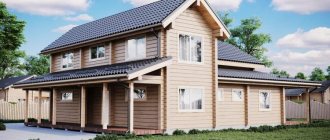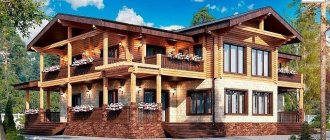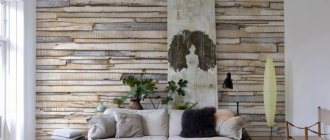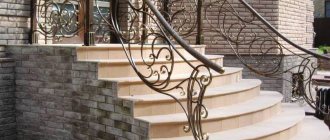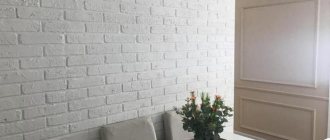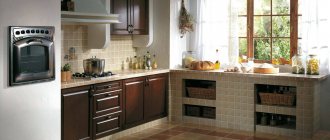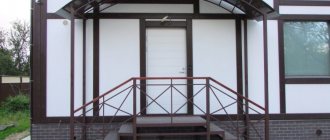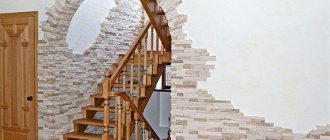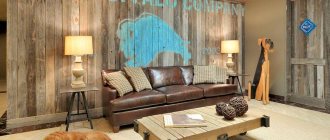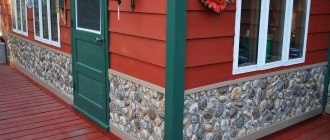It is human nature to decorate everything we can get our hands on. After all, since ancient times it has been the custom that beauty is a sign of power and greatness. Therefore, your own home was no exception. In particular, very beautiful photos of facade finishing with stone can be found on the Internet today. This is what we will talk about.
If a house is a book, then its façade is the cover of that book. And we certainly shouldn’t forget about this. Therefore, finishing the facade is an important step in home improvement. The use of natural stone is especially appreciated.
Advantages of finishing the facade with stone
Firstly, there is a huge selection of materials.
The variety of shapes and colors of panels is very important. These can be strict rectangles or completely incomprehensible shapes.
Safety. Natural material will not harm your health, and artificial stone is almost always environmentally friendly.
Reliability. Natural stone does not burn, is resistant to humidity, mechanical damage, and sudden temperature changes.
Additional sound and heat insulation.
Depending on your preferences, you can style your home as medieval, Egyptian, or northern. The possibilities are limited only by your imagination.
There is only one significant disadvantage: the rather high cost of finishing the facade.
Where is it used?
Wild stone is used not only for facade decoration. It is suitable for decorating the basement of buildings; it can also be used to decorate walls from the inside of the room. The openings of windows and doors trimmed with wild stone also look very beautiful. Floors made of natural mineral, fireplaces, columns and other decorative elements decorated with it will also look good.
On a note! Entire façade walls are rarely finished with wild stone, as this process is lengthy, labor-intensive and expensive.
Wild stone goes well with forged metal products, so you can add grilles and lanterns of various shapes made from alloys to the wall of the house.
Cladding steps and plinth with wild stone
Materials
Today on the market you can find materials that are divided into two groups:
- Artificial;
- Natural.
About artificial ones, it can be noted that they come in a variety of sizes and types. Most of them imitate natural material, and at the same time their cost is several times lower. Therefore, finishing the facade with stone panels is quite popular. But no matter how accurate the imitation is, plastic will never compare with real stone.
But you can dwell on natural materials in more detail. There are quite a few of them, but the most popular are marble, granite, limestone, labradorite, sandstone and slate.
Preparing the surface for installation
A properly prepared wall for stone installation will ensure reliable adhesion of the adhesive composition and good adhesion of the material.
The preparatory stage is as follows:
- it is necessary to level the walls;
- plaster protruding elements, seal cracks (applies to concrete and brick walls);
- remove nails, secure boards, replace moldy elements, waterproof and lay reinforced mesh (for wooden walls).
IMPORTANT!
For wooden surfaces, it is recommended to install a continuous sheathing on the frame, on which the stone elements will then be laid.
The walls are plastered, sanded, primed, and then an adhesive is applied to which the facing elements are glued..
Granite
In terms of price and external characteristics, it is on par with marble. It comes in both glossy (polished) and matte (not polished). It looks very impressive next to nature.
Granite can be divided into three types based on color scheme:
- Plagiogranite - gray shades predominate;
- Alaskite - reddish-pink shades predominate;
- Porphyritic granite is a cross between the other two types.
Features of extraction and processing
To obtain material in a quarry, rock is destroyed with explosives. For smaller jobs, a jackhammer is used. After this, the stones are ungrouped. Larger ones, the thickness of which is more than 10 cm, are used as rubble stone. This option is perfect for a foundation. More even pieces, the thickness of which is in the range of 1-10 cm, are carefully sorted. They are precisely called “wild stone”. These materials are further split to form plates.
Of course, such plates have an uneven surface, which makes the stone not particularly convenient for arranging paths. The exception is recreation areas and artificially made clearings.
Products that have undergone mechanical processing are also available for sale. For example, stone can be ground, milled, sawed, etc. The result is products of different shapes and textures:
- Rock. This type of stone is practically not processed, maintaining its natural appearance.
- Bush hammer. The surface on which pinholes are created, as if from impacts.
- Polished. It has a more even texture. But traces of mechanical processing are intentionally preserved.
- Sawn. The stone has its own natural roughness. Flame is often used in the processing process.
- Polished. It has a matte, almost smooth surface.
- Polished. Processing is carried out until a mirror shine appears on the surface.
Limestone
It is quite possible that this is an ideal stone for exterior facade decoration. Its main advantage is that it is easy to process. Therefore, it can have a wide variety of forms.
The surface of the material can be either polished or embossed. The color of the stone depends on its composition, most often yellow and white.
How and how to caulk a timber house with your own hands: materials and step-by-step instructionsDigging wells
Wall masonry - tips for choosing bricks, calculating thickness and brick laying techniques (100 photos and videos)
By the way, this is what the Egyptians used when building the pyramids. However, this material is not suitable for every climate. The stone can easily collapse due to temperature changes, high humidity or changing seasons.
Laying technology
Decorating a house includes a number of stages:
- Choice of glue. The composition must have excellent characteristics.
- Preparing the base. During the event, the surface becomes completely suitable for subsequent installation.
- Laying the material. Facades are faced with natural stone at positive temperatures and moderate humidity.
- Finishing work. Includes processes aimed at protecting the coating.
Each event is a continuation of the previous one.
The technology for laying a particular mineral largely depends on the pre-processing of the material
Glue selection
An adhesive composition suitable for use must have the following parameters:
- Good hold. Due to the large weight of the parts, it is necessary to ensure high adhesive strength. This figure should not be less than 80–85 kg per 1 m2.
- Linear expansion compensation. Facade cladding with stone can be carried out on different bases, the thermal resolution of which differs from the indicators of the finishing material.
- Persistence. Repairing a lined surface is a costly undertaking, so the adhesive must withstand moisture and temperature changes, as well as at least 40 defrosting and freezing cycles.
- Suitable drying time. If parts require trimming and adjustment, the fixing compound should not dry quickly. According to the time of use, the mixture should be suitable for 1–2 hours.
You shouldn’t even try to lay natural minerals on a cement-sand mortar; there are special types of glue for these purposes
Important! When cladding the facades of houses with stone, it is better to abandon the use of cement compounds; mixtures based on polymers are suitable. When choosing, pay attention to the manufacturer and characteristics; you cannot work with a solution that has expired. If the price of the product is low, then it is also better to refuse the purchase.
Preparing the base
Preparation includes the following activities:
- The walls are cleaned of dust and dirt. If the surface is decorated with a decorative coating, then it is removed.
- The condition of the façade is assessed. The wall being tiled must not be damaged. The cracks and joints are covered with putty, the defects are strengthened with reinforcing mesh to avoid cracking.
- The base is impregnated with primer. The mixture is selected based on the purchased glue. It is better to apply at least two layers, waiting for each to dry.
If the type of soil is not indicated on the glue packaging, then you can use standard concrete contact - After preparing the surface, the metal mesh is laid. It is needed to strengthen the applied solution. This is especially important with smooth walls. On brick foundations you can do without it, provided the joints are unstitched.
To fasten the mesh, dowels and screws are used, which are screwed in in increments of 15–20 cm. The reinforcing layer is not allowed to sag.
All types of heavy cladding, especially natural minerals, are placed only on a surface reinforced with metal mesh
Laying
Finishing the facade with stone depends on the type of material: installation of parts of the correct shape and laying of untreated products. In the first case, the algorithm of actions is as follows:
- Marking in progress. To do this, the starting row is determined using the level.
- Fastening starts from the corner. For convenience, the cord is stretched; it will provide control of evenness.
- The facing material is prepared in advance. According to the instructions, glue is applied to the base and the wrong side of the part.
- The element is pressed into place. If you need to create a clear row, then its position is checked by level and by cord.
- It is necessary to leave small seams, they will ensure the absence of defects when the outside temperature rises and falls.
- When the stone cladding reaches the window openings, the marking is repeated. If trimming is required, use a grinder with diamond attachments.
Natural material is quite difficult to lay end-to-end, so the gaps are filled with a special grout.
It is more difficult to decorate the surface in the second case. Since fragments of different sizes are used for work, the elements are laid out schematically on a flat surface, and further adjustment is carried out on site. Finishing facades with stone using this method allows you to get wide and uneven seams. The adhesive is applied to the part and to the base, after which the fragment is installed in place. The next element is first tried on; if necessary, it is cut or chipped off.
On a note! To cover the coating in this way, you need imagination and design ingenuity.
Before installation, it is advisable to lay out cladding consisting of non-format elements side by side on the ground, this will help determine the location of each stone
Finishing work
Subsequent measures include sealing the joints (if they were not filled with excess mortar immediately) and treating the surface with protective compounds. Most often these are hydrophobic mixtures that protect the coating from the harmful effects of precipitation.
Coating a stone facade with a water repellent or varnish is not a mandatory procedure, but when working, for example, with slate, such protection is highly desirable
Sandstone
Svidu is very similar to limestone, but stronger and more reliable. Compared to other types of materials, it is lighter, which makes it possible to use it in interior decoration.
You can find several types of sandstone on the market today:
- Oolitic;
- Pisolite;
- Shell rock;
- Lithographic.
However, only oolitic and pisolite are suitable for our work. The other two are used in the construction of foundations and walls of buildings.
